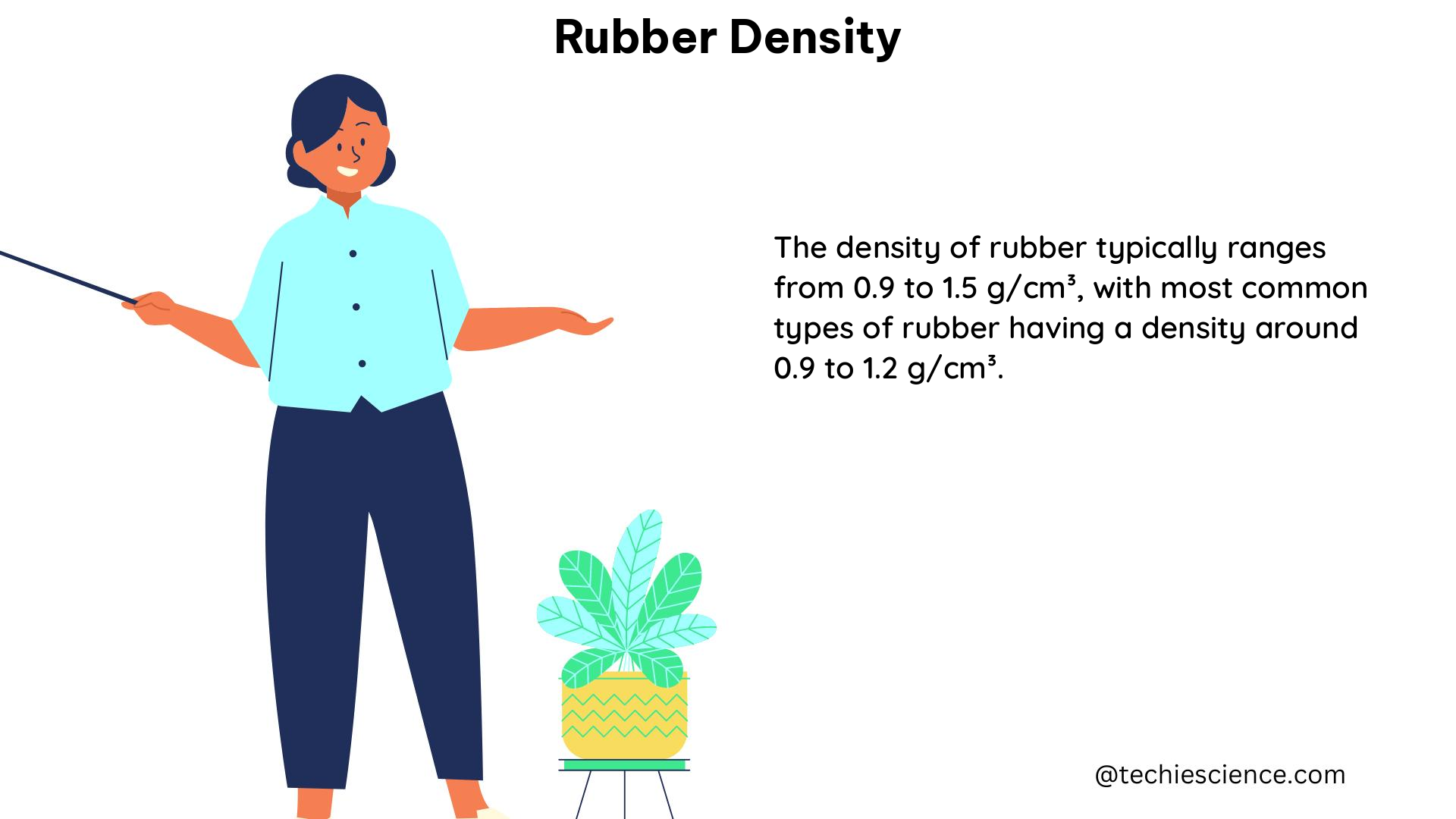Rubber density is a critical physical property that significantly impacts the performance and processing of rubber products. Understanding the density of rubber is essential for various applications, from product design to quality control. This comprehensive guide will delve into the intricacies of rubber density, providing you with a wealth of technical details and practical insights.
Measuring Rubber Density
The density of rubber can be measured using various methods, including the pycnometer method, which is widely accepted and used in industry and research. The pycnometer method involves determining the volume of a rubber sample by measuring the amount of liquid it displaces, typically using a calibrated glass vessel. This technique allows for accurate and reproducible measurements of rubber density.
Density of Rubber-Sulphur Compounds

The density of rubber-sulphur compounds has been found to vary from 0.9100 to 0.9126, with an average value of 0.9112. This range is crucial for understanding the properties and behavior of vulcanized rubber products, as the sulphur content can significantly impact the overall density.
Calculating Density of Rubber Mixtures
The density of unvulcanized mixtures of rubber and sulphur can be calculated using the following equation:
ρ(mixture) = (ρ(rubber) * X) + (ρ(sulphur) * (100-X)) / 100
Where:
– ρ(mixture) is the density of the mixture
– ρ(rubber) is the density of the rubber
– ρ(sulphur) is the density of the sulphur
– X is the percentage of rubber in the mixture
This formula allows for the accurate determination of the density of rubber-sulphur compounds, which is essential for optimizing the formulation and processing of these materials.
Quantifying Natural Rubber Content
In addition to the density of rubber-sulphur compounds, the content of natural rubber in Eucommia ulmoides can also be quantitatively detected using methods such as Pyrolysis-Gas Chromatography (PY-GC) and Pyrolysis-Membrane Inlet Mass Spectrometry (PY-MIMS). The range of rubber content detected by PY-GC is 1.510% ± 0.080% to 8.230% ± 0.209%, while the relative error of PY-MIMS determination is -3.178% to 5.416%. These techniques provide valuable insights into the composition and properties of natural rubber sources.
Relationship between Rubber Density and Molecular Structure
The density of rubber is closely related to its molecular weight, molecular weight distribution, and the degree of long-chain branching. These structural characteristics can significantly impact the processability and end-use performance of rubber materials. Rheological characterization utilizing a Rubber Process Analyzer (RPA) provides a quick and easy method to obtain these properties, thereby delivering a means to understand and develop polymer structure and bulk property relationships.
Numerical Examples
Example 1: Calculating the Density of a Rubber-Sulphur Mixture
Suppose we have a mixture of rubber and sulphur with a mass fraction of 97% rubber and 3% sulphur. If the density of rubber is 0.91 g/cm³ and the density of sulphur is 2.07 g/cm³, what is the density of the mixture?
Using the formula:
ρ(mixture) = (0.91 * 0.97) + (2.07 * 0.03) = 0.8847 g/cm³
Therefore, the density of the mixture is 0.8847 g/cm³.
Example 2: Calculating the Density of a Rubber Sample
A rubber sample has a volume of 10 cm³ and a mass of 9.1 g. What is the density of the rubber?
Using the formula:
ρ = m/V = 9.1 g / 10 cm³ = 0.91 g/cm³
Therefore, the density of the rubber is 0.91 g/cm³.
Key Figures, Data Points, and Values
- The density of rubber-sulphur compounds varies from 0.9100 to 0.9126, with an average value of 0.9112.
- The range of rubber content detected by PY-GC is 1.510% ± 0.080% to 8.230% ± 0.209%.
- The relative error of PY-MIMS determination is -3.178% to 5.416%.
- The density of rubber is closely related to its molecular weight, molecular weight distribution, and the degree of long-chain branching.
Conclusion
Rubber density is a critical physical property that significantly impacts the performance and processing of rubber products. This comprehensive guide has provided you with a wealth of technical details and practical insights on measuring, calculating, and understanding rubber density. By mastering the concepts and techniques presented here, you can optimize the design, formulation, and processing of rubber materials to meet the demands of various applications.
References
- Part I. Density of rubber-sulphur compounds, Part II. Electrical properties of rubber, NBS Scientific Paper 560, Vol. 22, pp. 383-395, 1970.
- Quantitative Detection of Natural Rubber Content in Eucommia ulmoides by Portable Pyrolysis-Membrane Inlet Mass Spectrometry, Molecules, 2023, 28(8), 3330; https://doi.org/10.3390/molecules28083330
- Using the TA Instruments Rubber Process Analyzer (RPA) to Optimize Mastication, TA Instruments Literature, RT008, 2022.

The lambdageeks.com Core SME Team is a group of experienced subject matter experts from diverse scientific and technical fields including Physics, Chemistry, Technology,Electronics & Electrical Engineering, Automotive, Mechanical Engineering. Our team collaborates to create high-quality, well-researched articles on a wide range of science and technology topics for the lambdageeks.com website.
All Our Senior SME are having more than 7 Years of experience in the respective fields . They are either Working Industry Professionals or assocaited With different Universities. Refer Our Authors Page to get to know About our Core SMEs.